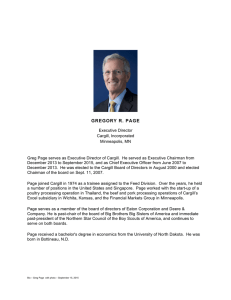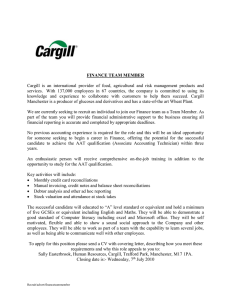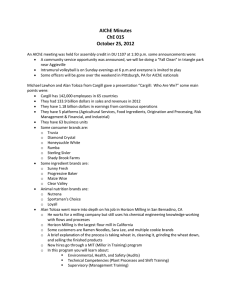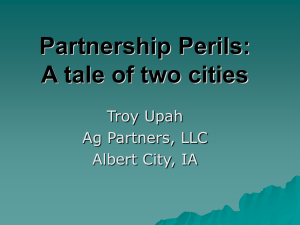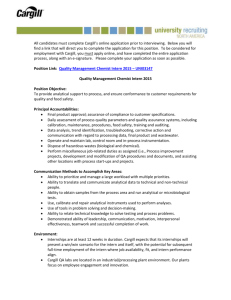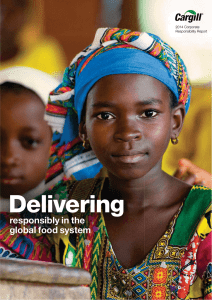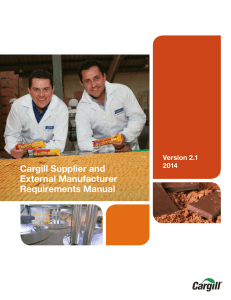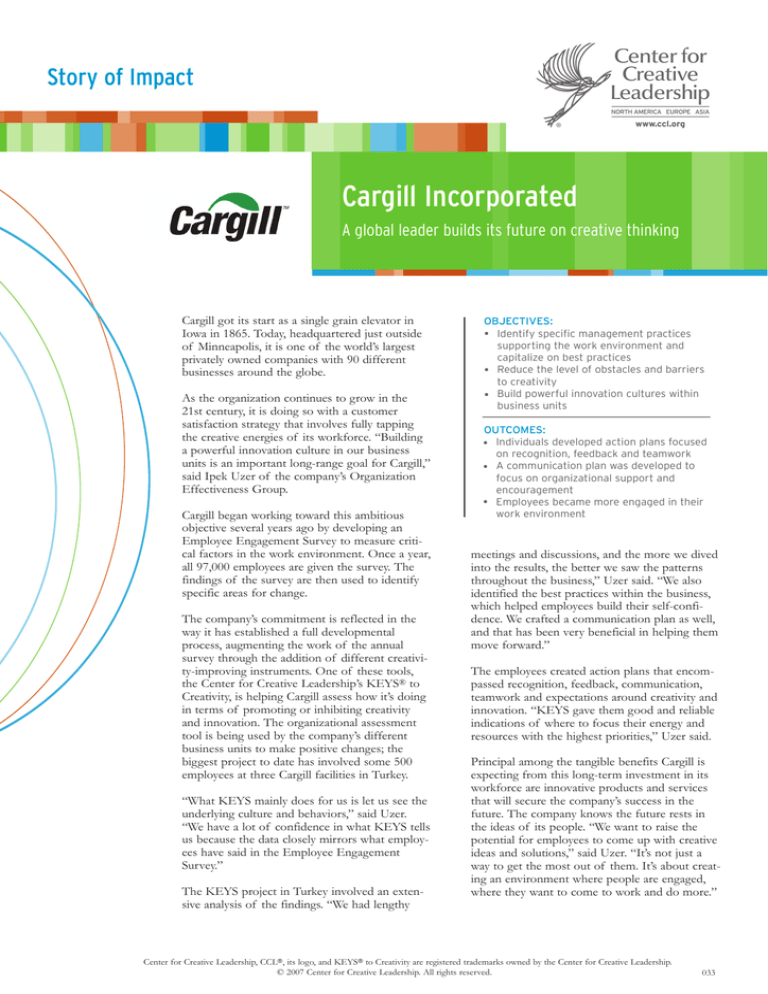
Story of Impact
Cargill Incorporated
A global leader builds its future on creative thinking
Cargill got its start as a single grain elevator in
Iowa in 1865. Today, headquartered just outside
of Minneapolis, it is one of the world’s largest
privately owned companies with 90 different
businesses around the globe.
As the organization continues to grow in the
21st century, it is doing so with a customer
satisfaction strategy that involves fully tapping
the creative energies of its workforce. “Building
a powerful innovation culture in our business
units is an important long-range goal for Cargill,”
said Ipek Uzer of the company’s Organization
Effectiveness Group.
Cargill began working toward this ambitious
objective several years ago by developing an
Employee Engagement Survey to measure critical factors in the work environment. Once a year,
all 97,000 employees are given the survey. The
findings of the survey are then used to identify
specific areas for change.
The company’s commitment is reflected in the
way it has established a full developmental
process, augmenting the work of the annual
survey through the addition of different creativity-improving instruments. One of these tools,
the Center for Creative Leadership’s KEYS® to
Creativity, is helping Cargill assess how it’s doing
in terms of promoting or inhibiting creativity
and innovation. The organizational assessment
tool is being used by the company’s different
business units to make positive changes; the
biggest project to date has involved some 500
employees at three Cargill facilities in Turkey.
“What KEYS mainly does for us is let us see the
underlying culture and behaviors,” said Uzer.
“We have a lot of confidence in what KEYS tells
us because the data closely mirrors what employees have said in the Employee Engagement
Survey.”
The KEYS project in Turkey involved an extensive analysis of the findings. “We had lengthy
OBJECTIVES:
z Identify specific management practices
supporting the work environment and
capitalize on best practices
z Reduce the level of obstacles and barriers
to creativity
z Build powerful innovation cultures within
business units
OUTCOMES:
Individuals developed action plans focused
on recognition, feedback and teamwork
z A communication plan was developed to
focus on organizational support and
encouragement
z Employees became more engaged in their
work environment
z
meetings and discussions, and the more we dived
into the results, the better we saw the patterns
throughout the business,” Uzer said. “We also
identified the best practices within the business,
which helped employees build their self-confidence. We crafted a communication plan as well,
and that has been very beneficial in helping them
move forward.”
The employees created action plans that encompassed recognition, feedback, communication,
teamwork and expectations around creativity and
innovation. “KEYS gave them good and reliable
indications of where to focus their energy and
resources with the highest priorities,” Uzer said.
Principal among the tangible benefits Cargill is
expecting from this long-term investment in its
workforce are innovative products and services
that will secure the company’s success in the
future. The company knows the future rests in
the ideas of its people. “We want to raise the
potential for employees to come up with creative
ideas and solutions,” said Uzer. “It’s not just a
way to get the most out of them. It’s about creating an environment where people are engaged,
where they want to come to work and do more.”
Center for Creative Leadership, CCL®, its logo, and KEYS® to Creativity are registered trademarks owned by the Center for Creative Leadership.
© 2007 Center for Creative Leadership. All rights reserved.
033

